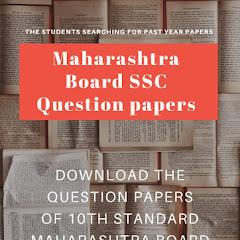Secretarial Practice :
| Book Name | Secretarial Practice |
| Board | HSC Maharashtra Board |
| Year of Published | 2020 |
| Publisher | BalBharati |
| Total Pages | 198 |
12th Secretarial Practice Textbook PDF Maharashtra board
(1). Introduction to Corporate Finance :
1.1 Meaning
1.2 Importance
1.3 Capital Requirements
(A) Fixed Capital and (B) Working Capital
1.4 Capital Structure
1.4.1 Definition
1.4.2 Components
1.5 Distinction
Summary of this Chapter
- Corporate finance deals with the acquisition and use of capital by business corporation.
- Fixed capital is that portion of capital which is invested in fixed assets such as land, building,equipment's, etc.
- Working capital refers to a firm’s investment in current assets such as cash, account receivable and inventories.
- Capital structure refers to the proportion of different sources of funds raised by a firm for long term finance.
(2). Sources of Corporate Finance :
- Sources of Owned Capital
- Shares
- Retained earnings
- Sources of Borrowed Capital
- Debentures
- Acceptance of deposits
- Bonds
- ADR/GDR
- Commercial Banks
- Financial Institutions
- Trade Credit
- Distinction
Summary of this chapter
- The various sources of finance can be divided as owned capital and borrowed capital.
- Share is a small unit of share capital of a company.
- Equity Shares do not enjoy preference for dividend and do not have priority for payment of capital at the time of winding up of company.
- Preference shares have prior right to receive fixed rate of dividend and return of capital in the event of winding up of the company.
- The debt acknowledged by a company by issuing debenture certificate is called debenture.
- Bond is an instrument issued by government or business firm as an evidence of debt.
- Retained earning is sum total of accumulated profit which are reinvested in the business.
- Public deposit is a loan accepted by company for short period of time ranging from 6 months to 36 months.
- Company can raise loan from banks in the form of overdraft,cash credit, cash loans, etc.
- Trade credit is a credit extended by manufactures and suppliers to customers.
(3). ISSUE OF SHARES
3.1 Classification of Share Capital
3.2 Issue of Shares
3.3 Methods of Issue of Shares
(A) Public Issue or Public Offer of Shares
- Fixed Price Issue Method
- Book-Building Method
- Initial Public Offer
- Further Public Offer
(B) Offering Shares to Existing Equity Shareholders
- Rights Issue
- Bonus Issue/Bonus Share
(C) Offering Shares to existing employees
- Employee Stock Option Scheme (ESOS)
- Employee Stock Purchase Scheme (ESPS)
- Stock Appreciation Rights Scheme (SARS)
- Sweat Equity Shares
(D) Private Placement
- Preferential Allotment
3.4 Allotment of Shares
3.4.1 Provisions/Conditions for Allotment of Shares
3.4.2 Procedure for Allotment of Shares
3.5 Share Certificate
3.6 Calls on Shares
3.7 Forfeiture of Shares
3.8 Surrender of Shares
3.9 Transfer of Shares
3.10 Transmission of Shares
3.11 Distinction








